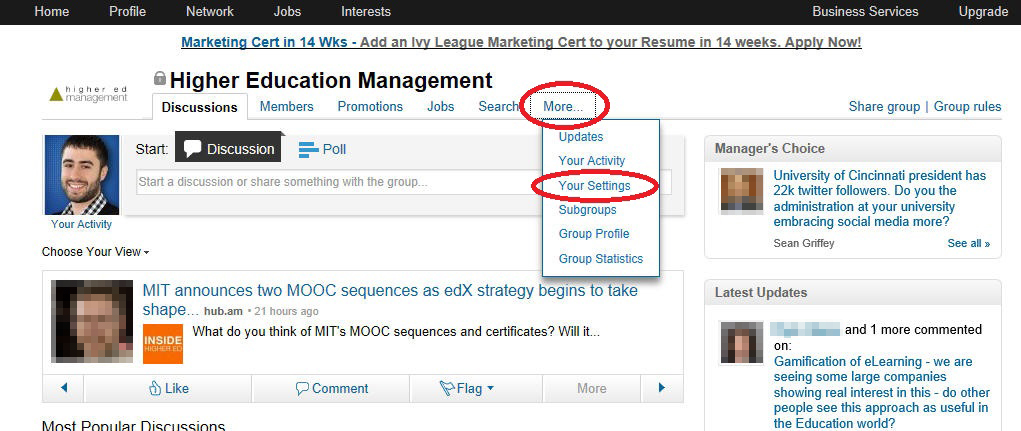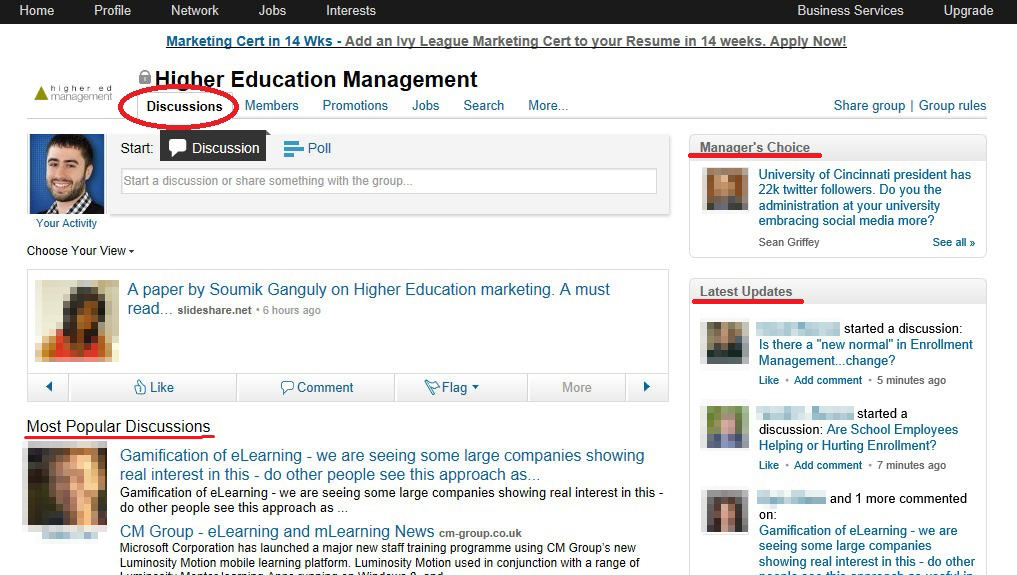enrollment
How higher ed professionals can use LinkedIn groups strategically
If you are a higher education professional and you aren’t utilizing LinkedIn on a regular basis, you are missing out on a great opportunity to expand your network and get new ideas from other higher ed professionals. Vice presidents, deans, and directors from all areas of campus can benefit from LinkedIn by investing as little as 10 minutes per day.
Before I get into what to do and how to do it, you first need to do an audit of your own profile (or sign up if you haven’t already). Here are a few things your profile should have:
- A professional-quality headshot—LinkedIn is a social network, yes, but it’s a social network for professionals. Your profile picture shouldn’t be a picture of you and your dog, or of you and anybody else for that matter. It should be a headshot with a solid background (and make sure you are smiling!).
- An updated contact info section—This should include an e-mail address, a link to your institution’s Web site, and possibly a phone number.
- A current professional headline/job title—This sounds obvious, but you would be surprised how many leave it blank or out of date.
- A detailed “Summary” section—You are allowed approximately 1,700 characters for this section, so take advantage of it. Use a paragraph or two to give a brief background of your professional history, and use the rest to highlight your professional accomplishments.
- An updated experience section—This should include details about your current position and responsibilities.
- Your “skills and expertise”—This section will make it easier for your connections to endorse you for the correct skills.
Once you have your profile updated, make sure you review it regularly and keep it current.
Connect with the higher ed community through LinkedIn groups
LinkedIn groups are something you should get very familiar with, and groups are where you should be committing a lot of your “LinkedIn time.” Luckily for those of you in the higher ed community, there are some GREAT LinkedIn groups that exist for doing just that.
Here are a few notable higher-ed-related LinkedIn groups:
- Higher Education Management – 55,360 members
- Higher Education Marketing & Communications – 8,576 members
- Higher Education Administration – 18,937 members
- Higher Ed Financial Aid & Enrollment – 4,901 members
- Inside Higher Ed – The New Conversation – 22,854 members
To join them, all you have to do is click one of the links above, then click “Join Group.” Many of the above groups are members only, so the manager of the group will have to accept your request to join.
***IMPORTANT: Configure your group settings after joining***
The first thing you should do after joining a group is configure your “group settings”:
Each group you join is defaulted to send you a daily digest e-mail of ALL activity in the group. For groups with thousands of members, that could be a lot of daily information. You can change this setting to only send you a digest e-mail once a week, or to send you none at all.
LinkedIn Groups 101
When you click on a group after you’ve been accepted into it, you will arrive at the default Discussions tab. If you are familiar with Facebook, this is similar to your Facebook newsfeed. You can start a new discussion, or you can scroll down and read the most popular discussions (determined by those with the most comments and likes).
You will also notice a column on the right-hand side of the screen that features the Manager’s Choice and an area where you can click to See All Updates (these are featured in chronological order).
Here are some ideas for how you can utilize these groups strategically:
- Ask for tips/advice—From what I’ve seen, the members in these groups are happy to give advice on higher-ed-related questions. For example, one member posted, “What blogs, Web sites, and social media forums do people find the most valuable to higher education?” and got a number of helpful responses that included links to the various resources.
- Get access to new relevant data—Members are constantly posting links to new data and news stories they come across. This is where it might be worth it to have your settings configured to send you a daily digest e-mail (or you could just visit the group once per day and scan the newest discussions).
- Network—The nice thing about LinkedIn groups from a networking perspective is that you get immediate access to a huge database of other higher ed professionals. You can click the Members tab and see everyone else who is in the group. You can also filter the results, for example if you wanted to just see members who had a specific title such as VP of enrollment.
- Share your expertise—Help answer other people’s questions or start a discussion about a new strategy or tactic that has yielded great results for your team.
As with anything, it may seem a little overwhelming at first, but if you dedicate just a few minutes per day to familiarizing yourself with these groups and participating when the opportunity presents itself, I know you will benefit from them. Good luck, and please e-mail me if you have any questions or need any help.

